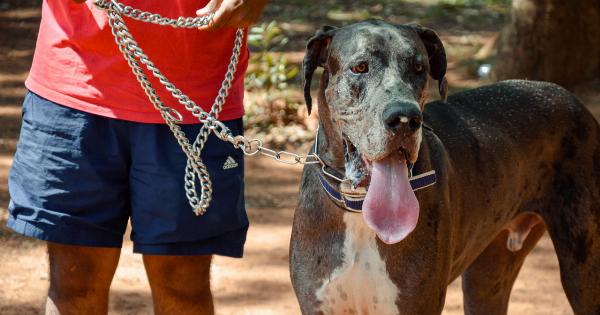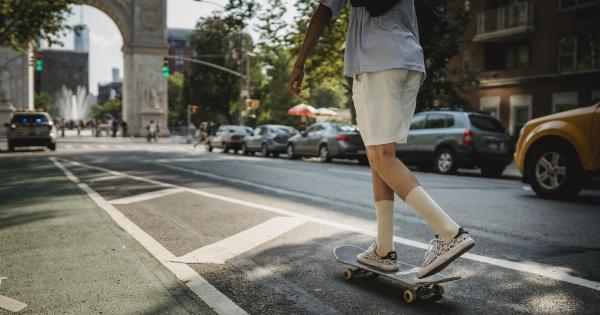When it comes to traveling with pets, there are some misconceptions and myths surrounding dog rides. Many dog owners love to take their pets with them on car trips, but they are often not sure about the best way to do so.
In this article, we will explore some common dog ride myths and debunk them with facts.
Myth 1: Dogs Can Sit on Laps in a Moving Vehicle
Many people believe that it’s safe for dogs to ride on their laps while driving. However, this is not true at all. Dogs should never sit on laps while the car is moving.
In case of an accident or sudden stop, the airbag may deploy, which can injure the dog severely. Moreover, dogs can easily get thrown out of the car if a window or door is open, leading to various injuries and accidents. Therefore, it’s best to secure your pet in a crate or with a harness that is attached to a seat belt.
Myth 2: A Dog’s Head Can Be Stuck Outside of a Window
Another common myth is that dogs love to stick their heads out of the car window, and it’s completely safe for them. However, this is far from the truth. A dog’s head can get injured by flying objects like rocks, branches, debris, or insects.
Furthermore, dogs can easily jump out of the window, leading to severe injuries or even death. Thus, it’s essential to keep car windows closed or at least partly open and provide a secure enclosure for your dog.
Myth 3: All Dog Breeds Travel Equally Well
Some pet owners believe that all dog breeds have similar traveling abilities, and it doesn’t matter what kind of dog you have. However, this is not accurate.
Some dogs might suffer from car sickness, anxiety, or panic attacks, making car rides difficult for them. Smaller or toy breeds may also get cold, so it’s essential to provide extra warmth and comfort, especially during winter months.
Myth 4: Dogs Don’t Need Breaks During Long Car Rides
Many dog owners assume that dogs don’t need bathroom breaks or rest stops during long car rides, but this is an incorrect assumption.
Dogs need to stretch their legs, drink water, and relieve themselves frequently to prevent discomfort and health problems. A general rule of thumb is to stop every two to three hours for a bathroom break and provide your furry friend with fresh water and food.
Myth 5: Medicating a Dog Before the Trip is Harmful
Some pet owners believe that giving their dogs medication to help them calm down or alleviate motion sickness before a long car trip is dangerous.
However, modern veterinary medicine provides various safe and effective solutions to make your dog’s car ride more comfortable. You can ask your vet for advice on which medications or supplements to use and how to administer them correctly.
Myth 6: Crating a Dog During a Car Ride is Cruel
Many people also believe that putting a dog in a crate during a car ride is cruel and inhumane. However, a crate can provide a safe and cozy space for your pet, especially during long road trips.
A crate can also prevent your dog from becoming a distraction or getting stressed out by traffic, noises, or unfamiliar surroundings. Moreover, a crate reduces the risk of your dog getting injured in case of an accident or sudden stop.
Myth 7: Dogs Don’t Need to Wear a Seatbelt
Another common misconception is that dogs don’t need to wear a seatbelt in the car because they are not required by law in some states.
However, just like humans, dogs can get severely injured or killed in a car accident if they are not properly restrained. A seatbelt or a harness that attaches to the car’s seatbelt can prevent your dog from getting thrown around inside the car or out of the car in case of an accident.
Moreover, some states have laws that require dogs to wear seatbelts or be secured in a crate during car rides.
Myth 8: Dogs Love Car Rides
Although some dogs love car rides and even get excited about them, not all dogs enjoy the experience. Some dogs get anxious, frightened, or stressed out by traveling in a car.
If your dog shows signs of discomfort, such as excessive panting, drooling, whining, shaking, or vomiting, it’s best to consult with your veterinarian and find ways to make the car ride less stressful for your furry friend.
Myth 9: Leaving a Dog Alone in a Car for a Short Time is Safe
Many dog owners believe that leaving their dogs alone in a car for a short time is safe, especially if the weather is mild. However, leaving a dog in a car, even for a few minutes, can be dangerous and even deadly.
The inside temperature of a parked car can rise quickly and reach dangerous levels, leading to heatstroke, dehydration, or suffocation. Moreover, a dog left alone in a car can easily become a target of theft or vandalism.
Myth 10: Dogs Can Travel as Cargo on Airplanes
Lastly, some people believe that dogs can travel as cargo on airplanes conveniently and safely. However, this is not always the case. Air travel can be stressful for dogs, and some airlines have specific regulations and rules regarding pet traveling.
You need to research and choose a reputable airline that follows safety standards and has the necessary facilities and equipment to handle pets. Moreover, some breeds or dogs with certain health conditions might not be allowed to travel by air.
Conclusion
Traveling with your furry friend can be a fun and rewarding experience. However, it’s essential to know the do’s and don’ts of dog rides to keep your pet safe, comfortable, and happy.
By debunking these common dog ride myths, you can make informed decisions and take the necessary measures to ensure your dog’s safety and well-being during car rides and air travels.





























